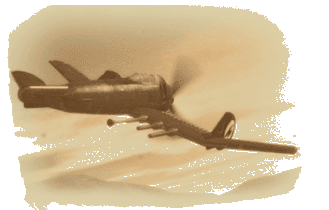
 |
||
 |
 The Whittly & Douglas M210 Raven is an agile fighter-bomber that was designed with an eye towards ease of maintenance. In fact, it is this facet of the Raven’s design that has made it popular, and in fact, made it one of the most widely-customized aircraft in service today. Unlike most fighter-bombers, the M210 Raven is a single-seat aircraft (though some groups—most notably the Detroit Crusaders—have added a seat for a weapons operator in the rear of the plane’s spacious cockpit). As a result, while the Raven is a capable aircraft, pilots routinely have their hands full, which is only exacerbated by the constantly changing nature of air combat. Three sets of wing-mounted guns are the aircraft’s principal armaments, providing firepower that can rapidly shred opposing vehicles. The largest are the pair of .50-caliber Sperry-Browning Hurricane cannons (one mounted in the inboard weapon bay on each wing). An additional quartet of .40-caliber Gatekeeper machine guns (two per wing) round out the Raven’s offensive capability. Wing pylons allow the Raven to carry rockets, aerial torpedoes or bombs. Despite limited cockpit visibility, the craft has earned a reputation for precision delivery of its payload; pilots learn to use the Raven’s distinctive nose to aim. Whittly & Douglas originally set out to create a ground attack aircraft, though the Raven has also garnered a reputation as a dangerous anti-aircraft gunship. The Raven’s mix of agility and firepower make it ideal for this task, allowing for selective targeting of engine nacelles or weapons, or wholesale destruction of gas cells. However, this same mix of capabilities has proven the bane of many Raven pilots. The lack of effective opposition to the Raven’s heavy guns in its early years made many flyers overconfident, prompting them to dogfight with enemy escort aircraft. Though the Raven’s agility still gives it something of an edge in these engagements, its poor acceleration and deceleration, combined with a low maximum speed compared to more modern craft, leave the Raven vulnerable when facing opponents with more nimble planes. Though surpassed in many respects by several newer designs, this aircraft’s ease of maintenance, adaptability and sheer numbers (with more than 750 remaining in service) will keep the Raven a common sight in the skies over North America. |
|
 |
||
 |